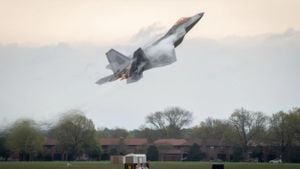After spending months high above Earth, two astronauts stranded at the International Space Station (ISS) received some long-awaited company and support thanks to SpaceX’s recent rescue mission. The Dragon capsule, tasked with bringing back the astronauts who were initially scheduled to return weeks ago, docked successfully at the ISS. This event marks another milestone for SpaceX, which has been on the frontlines of human space travel since its first crew flight back in 2020.
Launched from Cape Canaveral, Florida on Saturday, the Dragon capsule carried NASA astronaut Nick Hague and Russian cosmonaut Alexander Gorbunov. Interestingly, the mission was initially intended to bring four astronauts back, but space travel is filled with surprises. Two additional seats were reserved for Butch Wilmore and Sunita Williams, both of whom had temporarily taken refuge aboard the ISS due to complications with their previous flight plan.
Originally, Wilmore and Williams were supposed to stay on the space station for just about eight days. But when Boeing’s Starliner spacecraft, which was meant to return them home, experienced serious technical problems, their mission has now extended to over eight months. Boeing's Starliner faced thruster failures and helium leaks shortly after its inaugural crewed test flight, leading NASA to decide against risking the astronauts' return on the faulty craft. Consequently, the Starliner returned to Earth empty earlier this month.
This situation underlines the importance of having reliable transportation for astronauts. Following the complications with the Starliner, NASA opted to transfer Wilmore and Williams back to SpaceX’s Dragon capsule, which has been providing shuttle services since NASA partnered with SpaceX. These launches are part of NASA’s contract with both SpaceX and Roscosmos, the Russian federal space agency, to transport repair crews to and from the ISS, ensuring both American and Russian astronauts are regularly exchanged.
"I just want to say welcome to our new compadres," said Sunita Williams, now the Commander of the ISS, as Hague and Gorbunov arrived aboard the Dragon capsule. The two new arrivals had brought supplies for their fellow astronauts but were also officially joining the crew for the next phase of operations on the station.
Hague expressed his excitement upon entering the ISS. He remarked, "Coming through the hatch and seeing all the smiles, and as much as I’ve laughed and cried in the last 10 minutes, I know it’s going to be an amazing expedition." Williams, sharing her experience via video link earlier this month, had previously relayed how both she and Wilmore missed their families, their pets, and the everyday comforts of life on Earth. "There are so many people on Earth sending us messages. It makes you feel right at home with everybody," she added.
This latest SpaceX launch became one of many, as the company continues to build its reputation for safe and effective crew transport. Still, the concern over the Starliner’s issues serves as a reminder of the unpredictable nature of space missions. NASA has faced significant costs—over $1 billion—due to software issues and repairs needed after the failures of Boeing's crew transport missions, which have fallen behind schedule.
For the astronauts continuously orbiting overhead, the Dragon capsule will remain docked for several months before bringing Wilmore and Williams back to Earth, projected for February next year. Until then, the four astronauts on the ISS will conduct research and maintenance, capitalize on space-based experiments, and enjoy their time floating above the planet.
Meanwhile, SpaceX’s prowess has made it the go-to service provider for transporting astronauts, showcasing how pivotal private companies have become for NASA's human spaceflight programs. With each successful mission, including this latest rescue, they are paving the way for future expeditions, including aspirations for Mars and beyond.
Overall, the docking of the Dragon capsule stands as another success for both SpaceX and NASA, though it carries the bittersweet acknowledgment of how unpredictable traveling beyond our planet can be, especially when it involves the delicate machinery and technology we rely on for such trips.



